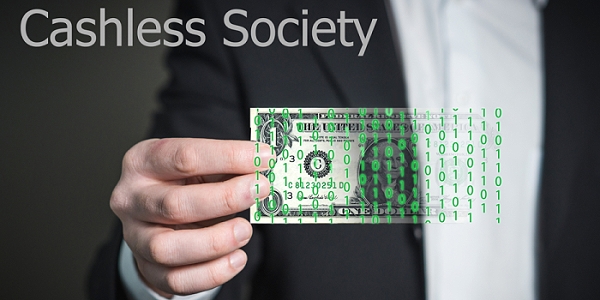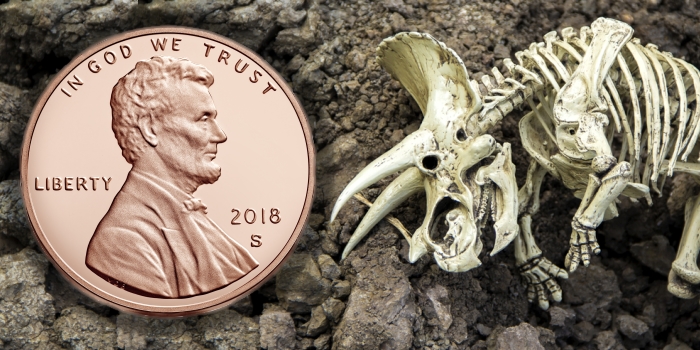
What would a cashless society mean for numismatics?
By Jeff Garrett for Numismatic Guaranty Corporation (NGC) ……
In the last few years there has much debate and new thought about what should be considered money. Bitcoin has captured the fascination of many, particularly the millennial generation. The idea of a decentralized currency that is not controlled by governments appeals to a lot of people.
So far, Bitcoin and other digital currency have been mostly a speculative vehicle, and have not made much of an inroad as currency. Their extreme volatility will prevent widespread use as money for the near future.
Perhaps more threatening to coins and currency has been the rise of digital payments, such as credit and debit cards. The so called Cashless Society. There are a lot of players in online and digital payments. The use of actual physical money is surely on the decline in most of the industrialized world.
Sweden recently announced its plans to eliminate coins and currency by the year 2030. According to reports, only 1% of transactions in Sweden last year were in coins or currency. Merchants state they like the safety of not handling cash. Several other Scandinavian countries have made similar efforts to eliminate cash transactions.
The United States is probably many more years away from going cashless, but it is most surely only a matter of time. My guess is that it will be a very slow transition (decades), with coins being phased out over time.
United States currency will most likely be around for much longer, as it is used in many countries around the world for local payments. U.S. citizens would also resist having every transaction they make traceable and subject to government control.

The first United States coins that will be slated for elimination are surely the one-cent and five-cent coins. Currently, the U.S. Mint reports that it costs 1.8 cents to make a penny and 6.6 cents to make a nickel. With billions made each year, this adds to a lot of money lost by producing them. There are quite a few supporters on both sides of the coin (sorry for the pun) of this issue.
Detractors point out that a penny and a nickel have very little purchasing power and would not be missed. Many other countries have eliminated these denominations in recent years. Supporters of the penny and nickel think that dropping low-denomination coins would hurt low-income consumers when prices are rounded up. They also point out the continued popularity of the coins. Last year, demand for the coins increased once again.
Regardless of your stance on the issue, as coin collectors, we should think about the consequences of these and other denominations being removed from circulation. Would interest in one-cent coins increase or decrease if the United States Mint stopped making them?
I have heard several rare coin experts state their concerns about people losing interest if they were no longer in circulation. Others think the public may view them as relics and worthy of collecting. This is really no small question for the numismatic community to consider. Like millions of other collectors, I started my long numismatic journey by collecting Lincoln Cents.
For an historical perspective, it would not be the first time that the Mint has eliminated a circulating denomination. There are several examples of now-extinct U.S. coin denominations:
- Half Cent: 1793-1857
- Two Cent: 1864-1873
- Three Cent nickels: 1865-1889
- Three Cent silvers: 1851-1873
- Twenty Cent: 1875-1878
- One Dollar gold: 1849-1889
- Two and One Half Dollar gold: 1796-1929
- Three Dollar gold: 1854-1889
- Four Dollar gold (patterns): 1879-1880
- Five Dollar gold: 1795-1929
- Ten Dollar gold: 1795-1933
- Twenty Dollar gold: 1849-1933
All of these coins are very actively collected, and collectors seem drawn to what they consider odd denominations. More about these interesting coins can be found on NGCcoin.com, or my book about type coins, United States Coinage: A Study by Type.
It will probably be many more years before United States coins disappear from circulation, but the world is changing much faster than most of us realize. The numismatic community should think carefully about issues like this that may have a dramatic impact on the demand for rare coins.
I would be interested to know what you think about how the hobby would be impacted if the Mint stopped making one- and five-cent coinage. Also, do you think the numismatic community should lobby to make sure these coins are made for as long as possible? I will report to readers what I learn in a future article.
Lots to consider!





I’m all for eliminating the one cent coin but cool with keeping the five cent coin.
It will be difficult to eliminate the nickel unless the quarter is replaced as well. As we collectors all know, the quarter is a compromise denomination that was created for compatibility with Spanish 8-reales pieces. Because it’s an odd multiple of 5 it doesn’t fit into a true decimal coinage system; eliminating the nickel would leave only dimes and quarters in common circulation. Change-making would become more inconvenient because most amounts rounded to the nearest 10¢ would have to be paid in multiple dimes. The situation would be similar to that in the UK in the first decade following decimalization, where the lack of an appropriate intermediate denomination led merchants to make change using stacks of 10p coins.
In 2015 the Royal Mint of Canada (one of the only other nations with a 25¢ coin) looked at what it would take to eliminate their nickel. The study concluded that the only practical fix would be to replace their quarter with a 20¢ denomination, as is the practice in nearly every other country that uses decimal coins. Whether that could EVER happen in the US, given our fixation on “tradition” and “being uniquely American”, is anyone’s guess.